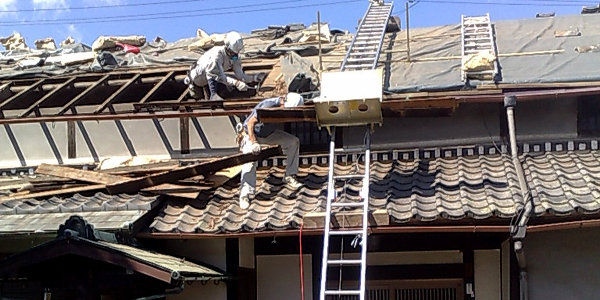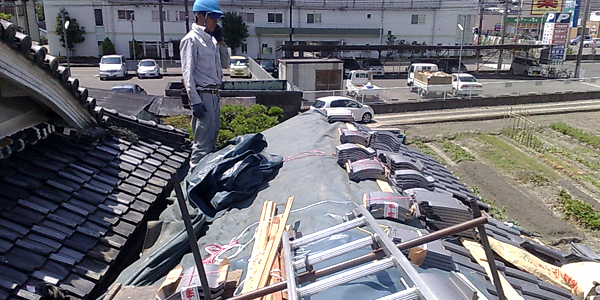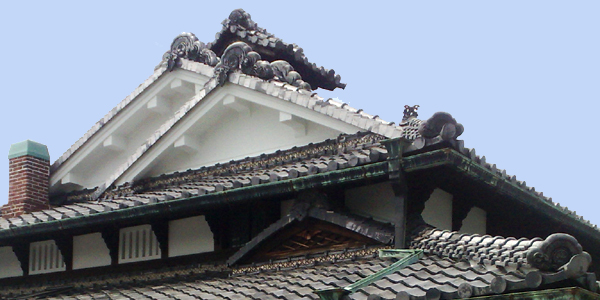
The Japanese traditional houses in Kyoto such as Tea Ceremony Room or Kyo-Machiya are produced by ARAKI Komuten Co., Ltd. アラキ工務店
The Japanese traditional houses in Kyoto such as Tea Ceremony Room or Kyo-Machiya are produced by ARAKI Komuten Co., Ltd. アラキ工務店




 |
| It is said that Kyoto people tend to hate 'luxurious design' for a kawara roof. That is why old housing in Kyoto has simple and humble appearance. | |||||
| A lattice door with the bright red colorant of Bengala. Each house frontage lined up on a street. Kyoto townscape is simply beautiful. People in Kyoto did not like standing out very much so that they had built similar houses to match neighbors each other. These modest designs are derived from the philosophy of Soan teahouse which Sen-no-rikyu invented. |
|||||
| If you look at the kawara tiled roof carefully, you will recognize that its shape is a little rounded. That is called 'Mukuri'. According to Mr. Daisuke Mistumoto, who is a Kawara tile craftsman, ‘You will understand the meaning of its design when you see it from under the roof. if a pitch from the main ridge to the edge of the eaves is little slanting or on the straight, it seems that a roof becomes dented.’ Mukuri shapes should be the same so that it creates uniformity. Kawara tiles require not only its beauty but also the durability and the safety. However, one big natural disaster 'the Great Hanshin Earthquake' brought home to us the danger of Japanese old housing. Many kawara tiles felt down from the roof and the building shapes became crooked due to the weight of the roof soil. |
|
||||
| ‘I was very shocked to see the sight after the big earthquake. It is because I know the kawara should have the durability not only its beauty, and I had a confidence to do so. I really could not accept that reality.' After a while, a method of kawara piling construction was reviewed and has changed. As the transitional method, the roof was covered with soil. However, now the crude woods are fixed on the base first, and then kawara tiles are applied over the woods. The new method reduces the weight of the entire roof. What is more, each kawara tile is fixed on the house roof firmly so that it is no problem even if the typhoon comes tomorrow. ‘We had a seismic qualification test for the new roof method at Kyoto University by making the same level shake of the Great Earthquake. The roof was perfectly stable. The long lasting kawara culture has developed more.’ The construction method has been developed day by day. Same as the past, the young craftsmen work monotonously and repetitively until it becomes automatically. This is same as old days. Those promising craftsmen have been waiting for their chance. |
|||||
